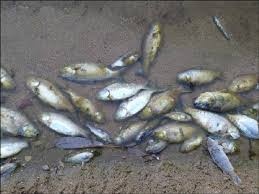
A study of mercury contamination in a south-eastern Peruvian jungle area ravaged by illegal gold mining found unsafe levels of the toxic metal in 78 percent of adults in the regional capital and in 60 percent of fish sold at markets.
The study by the Carnegie Institution for Science calls the contamination a “grave and mounting threat to public health.”
We spend more on government-provided health care than they do in Canada, France, Germany, Israel, Italy, Japan, Sweden, or the United Kingdom. And all those countries have government-based systems that cover everybody. We don't.
Mercury is a by-product of artisanal gold mining as practiced by the estimated 40,000 miners in the Madre de Dios region.
In discussing the overall human impact, the newly-released study said that the population segment most vulnerable to mercury poisoning had the highest average mercury levels: women of childbearing age. As a neurotoxin, mercury can cause severe, permanent brain damage to an unborn child.
The study, led by Luis E. Fernandez of Stanford University, said mercury levels increased in 10 of 11 fish species studied in 2009 and then again in 2012.
Peru is the world’s fifth-largest gold producer, and the government has made scant progress trying to halt the illegal mining and formalise the miners.
Unlike formal mining that occurs in the Andean highlands, the mining in Madre de Dios consists chiefly of scouring riverbeds and alluvial deposits for flecks of gold that adhere to mercury in a crude amalgamation process.
About 35 metric tonnes of mercury is dispersed into the air and waters of the region annually, exposing not just miners to the metal but also city dwellers in Puerto Maldonado, the regional capital that is one of the urban areas where mercury vapor is released by “gold shops” that buy and refine gold.
In addition to the mercury contamination, the mining has denuded some 70 square miles (18,000 hectares) of formerly virgin rainforest in one of the world’s most biologically diverse regions.